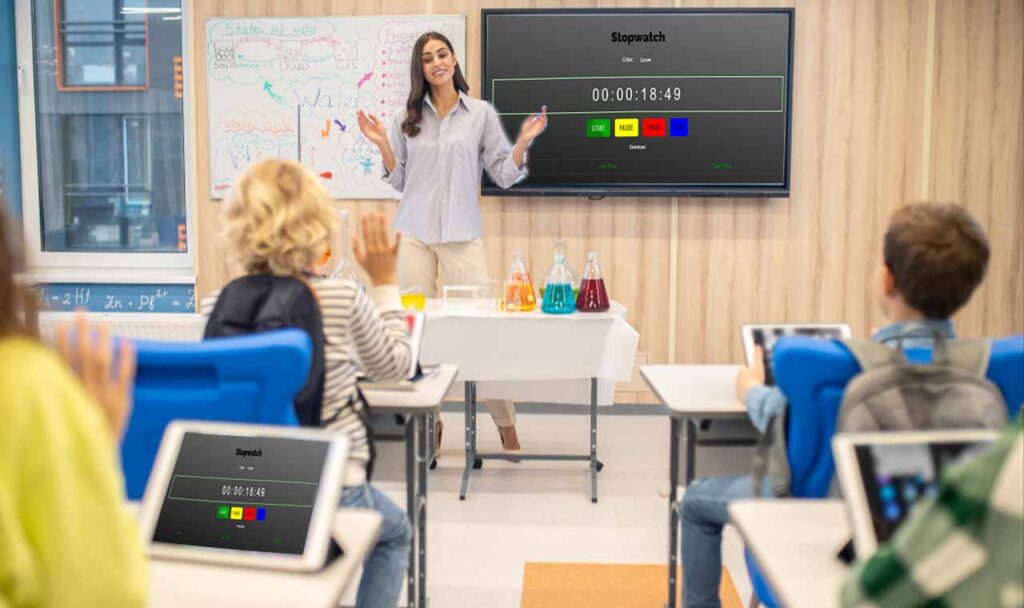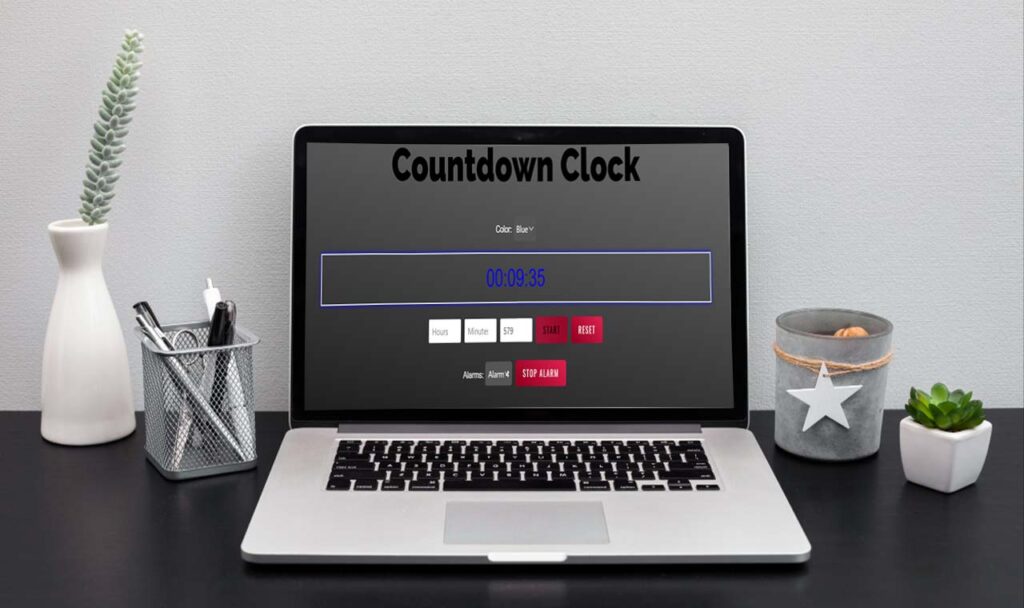Stopwatches present fun opportunities to liven up lessons across subjects while teaching important skills. Timing introduces critical STEM concepts and life abilities like concentration, quick reactions, and data gathering.
This article shares interactive stopwatch activities that are adaptable for grades K–12. Get students active while learning with these engaging stopwatch games and experiments!

Benefits of Using Stopwatches in the Classroom
Incorporating stopwatch activities offers many academic and social benefits, including:
- Improves focus and attention skills required for timing tasks
- Allows collecting real-time data during experiments and games
- Teaches quantitative analysis of timed measurements
- Promotes friendly competition and peer collaboration
- Provides active learning breaks from seat work
- Lets students practice using scientific tools
- Introduces concepts like rates, speed, duration
- Builds quick reflexes, coordination, and agility through fast reactions
- Fosters teamwork, sportsmanship, and interpersonal relationships
- Boosts enthusiasm and participation in learning activities
- Helps students overcome fears of being timed or competing
Stopwatch Options for Classrooms
Digital stopwatches work best for classroom use. Models with simple start, stop, and lap functions allow easy operation. Other useful features include:
- Big, clear displays are visible to students
- Lanyard to prevent dropping
- Audible alarms signal the end of time
- Battery icon indicating remaining life
- Extra stopwatches for groups
- Removable back plate for battery replacement
Online digital stopwatch sites or phone apps allow displaying a projected timer visible to the full class. This lets everyone monitor the time simultaneously.
Getting students their own watch also builds responsibility. Assign one student as the official timekeeper to oversee the activity stopwatch procedures.
Fun Stopwatch Activities for Elementary Students
Young elementary grades can benefit from simple games teaching initial timing skills:
Stopwatch Counting Races
Students take turns being the timekeeper and guessing how long 10 seconds is while other students silently count the time in their heads. The goal is to try to stop the timer as close to 10 seconds as possible without going over. Have students record guesses and reveal the times.
Movement Freeze Dance
Students dance or move around the classroom until the timekeeper stops the music or sounds the stopwatch timer. Everyone must freeze in place once the stopwatch alarm sounds. Repeat several times.
Stopwatch Drawing Challenge
Give students a time limit like 45 seconds using the stopwatch to complete a drawing prompt. Topics could be their dream house, favorite animal, a self portrait or more. Repeat the challenge using less time on subsequent rounds to increase difficulty.
Stopwatch Storytelling
Have students sit in a storytelling circle. Use the stopwatch to allow each child ~30 seconds to add onto a story prompt before passing the story to the next student to continue. See how far the story progresses!
Stopwatch Alphabet Race
Time students reciting the alphabet within a short interval like 5 seconds. See how far they get. Increase to 7 seconds, 10, 15 etc on subsequent rounds. Alternate between trying as individuals or teams.
Active Stopwatch Games for Older Elementary Grades
Older elementary students can handle more complex timing activities:
Stopwatch Movement Challenges
Challenge students to identify as many state capitals as possible within 45 seconds, do as many jumping jacks as they can in a minute, clean their desk area within 30 seconds, or other timed tasks that get them moving. Have the class record and compare results.
Stopwatch Concentration
Play classic concentration memory games, but have students race against a ticking stopwatch rather than competing head-to-head. This builds focus and challenges students to tune out distractions while under time pressure.
Stopwatch Math Sprints
Call out increasingly difficult multiplication problems and have individual students race against the stopwatch to write answers before time elapses. Similarly, time students locating places on a map, creating sentence rhymes, naming vocabulary terms, drawing polygons, and more.
Classroom Olympics or Field Days
Hold classroom Olympics or field day events involving stopwatches to time students through various athletic challenges – obstacle courses, relays, distances run, agility drills, etc. Record times and award medals.
Stopwatch Scavenger Hunts
Send students searching on a timed scavenger hunt to locate items around the classroom before the stopwatch runs out. For more learning, have them collect items fitting a specific theme like shapes, colors, historical figures, math terms or science objects.
Engaging Stopwatch STEM Activities for Secondary Grades
Advanced middle and high school grades can utilize stopwatches during STEM experiments and labs:
Gravity Experiments
Drop balls from varying heights and use a stopwatch to time how long they take to fall and bounce. Have students calculate gravity and velocity. Extend experiments to slopes, pendulums, or bouncing different surfaces.
Chemical Reactions
Time how long mixtures, acids/bases, mentos in soda, or other reactions take to change color, dissolve, bubble, etc using precise stopwatch measurement. Calculate reaction rates.
Ball Speed Experiments
Students time balls rolled down ramps from different starting heights and angles. By measuring distance traveled, they can calculate final velocity. Or time bouncing balls to evaluate energy lost.
Plant Growth Experiments
Use stopwatches to document how long seeds take to sprout and grow over days or weeks. Compare growth times under different light, water, and soil conditions. Consider other living organisms as well like microbes.
Pendulum Experiments
Time pendulum swings of varying lengths. Students can find the relationship between pendulum length and swing period through precisely timed measurements.
Assessing Sports Scores
Have students time various skills like dribbling a basketball through cones, kicking goals, or completing an obstacle course. Evaluate performance scores based on time elapsed.
Stopwatch Coding Challenges
Incorporate stopwatch projects when learning coding. Ideas include creating: reaction time quizzes, on-screen timers and clocks, lap/stopwatch data recording apps, game timers, or productivity timers to manage work sprints.
Whether your students are grades K-5 or high school seniors, integrating stopwatch activities stimulates active, hands-on learning. Timed challenges help students build critical thinking, STEM knowledge, collaboration, and other key competencies necessary for success beyond the classroom.

